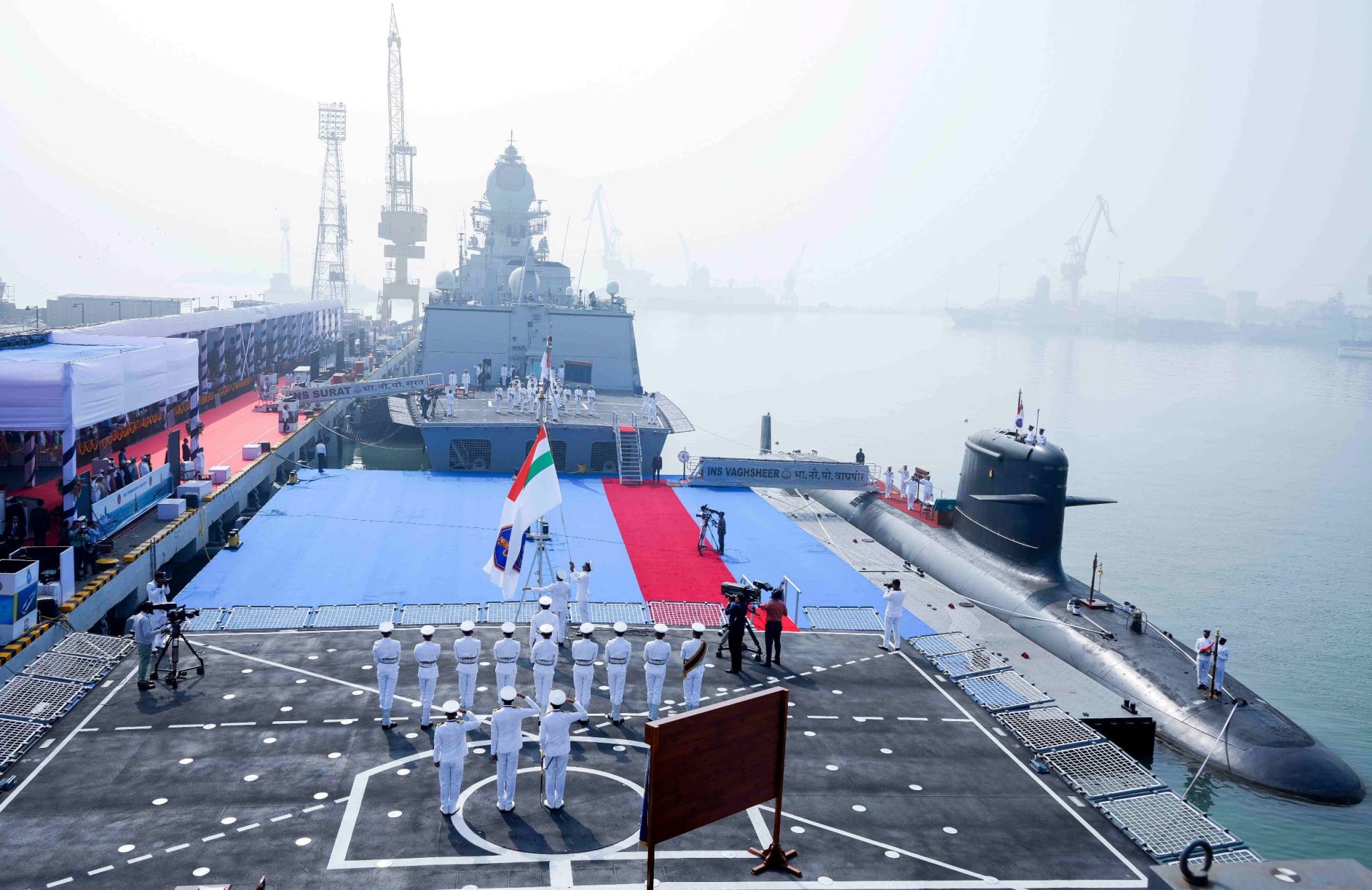India Commissions Trio Of Warships
INDIA commissioned three major combatant vessels simultaneously on January 15, comprising a destroyer, frigate and submarine. The occasion also marked the first instance these three types of vessels were commissioned into the Indian Navy at the same time.
Products of the “Atmanirbhar Baharat” initiative, the three locally produced vessels are among the 33 surface vessels and seven submarines commissioned into service over the past decade, emphasising the importance in protecting the Indian Ocean region which had been the epicentre of the great superpower rivalries. Of the 40 vessels, 39 of the ships were all made in India, including the INS Vikrant aircraft carrier as well as INS Arihant and INS Arighaat nuclear submarines.
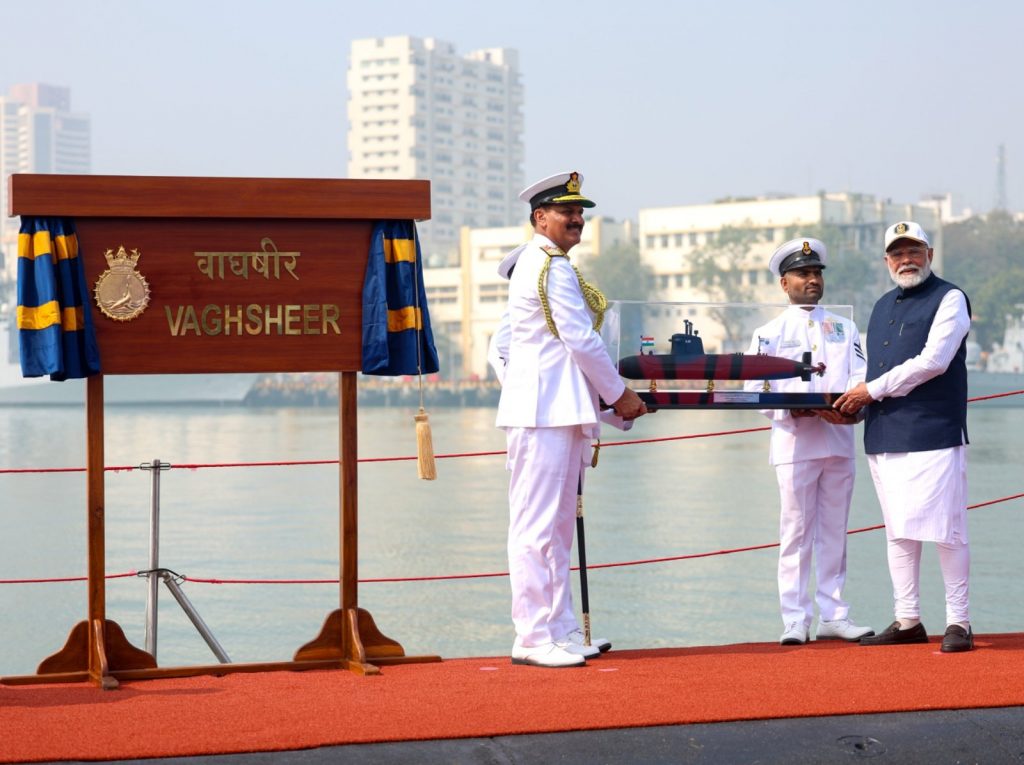
The prime minister, Narendra Modi said, “The commissioning of three major naval combatants marks a significant leap forward in realizing India’s vision of becoming a global leader in defense manufacturing and maritime security. India is giving the biggest importance to making its navy powerful to protect its interests,” he said.
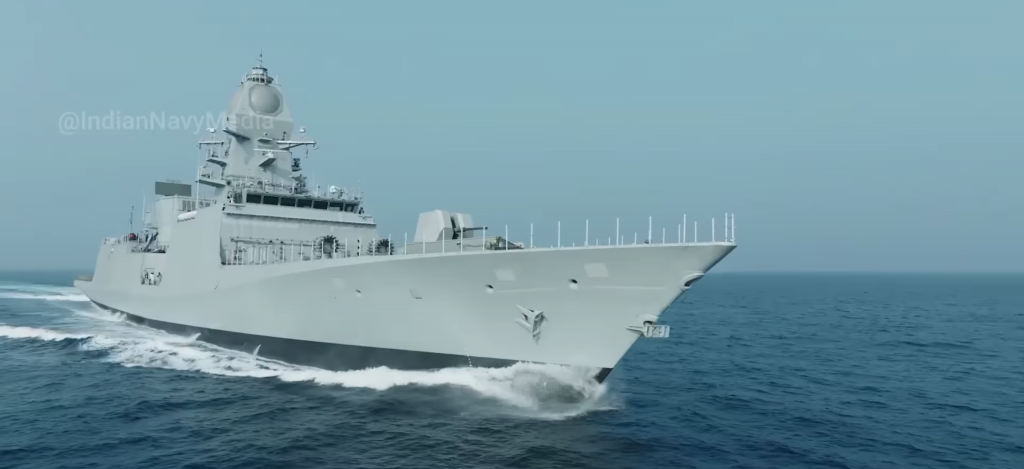
INS Nilgiri, the lead vessel of the Project 17A-class frigates featured enhanced stealth features and a reduced radar signature. Additionally, the ships in this class were some of the first Indian-built vessels to be built through a modular integrated construction where extensive pre-outfitting at the block stages reduced overall building periods.
The 149-metre long vessel is armed with supersonic BrahMos cruise missiles, Barak-8 medium-range surface-to-air missiles (MRSAM), an improved 76mm main gun, 30mm close-in-weapons systems, triple torpedo launchers, anti-submarine warfare (ASW) rocket launchers. With seven ships in the class, 4 are being built by by the state-run Mazagon Dock Shipbuilders in Mumbai while another three are being built by Kolkata’s Garden Reach Shipbuilders and Engineering.
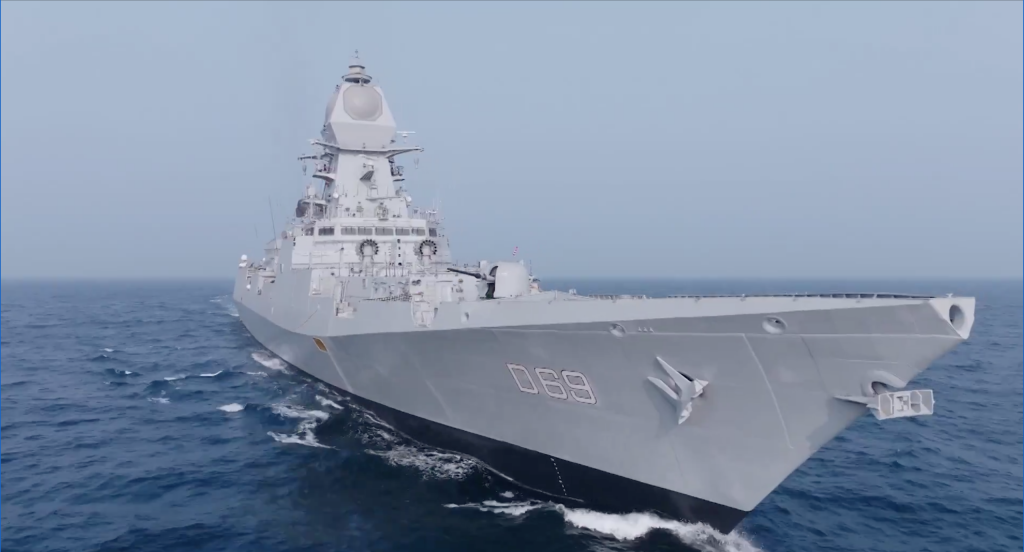
Next, the fourth and final Project 15A-class stealth guided-missile destroyer, INS Surat which is the service’s first artificial intelligence (AI) enabled warship which would improve operational efficiency. It is powered by a combined gas and gas (COGAG) propulsion and has a similar array of armaments as the Nilgiri, including BrahMos cruise missiles, Barak-8 MRSAMs and a 76mm gun among others. Furthermore, the Surat contains 75% indigenous content with cutting edge sensors and advanced network-centric capabilities.
Both the Nilgiri and Surat can accommodate a wide range of rotary-wing aircraft, including the Advanced Light Helicopter (ALH) Dhruv, and even the newly inducted MH-60R Seahawks for day and night operations via its Rail-Less Helicopter Traversing System and a Visual Aid and Landing System.
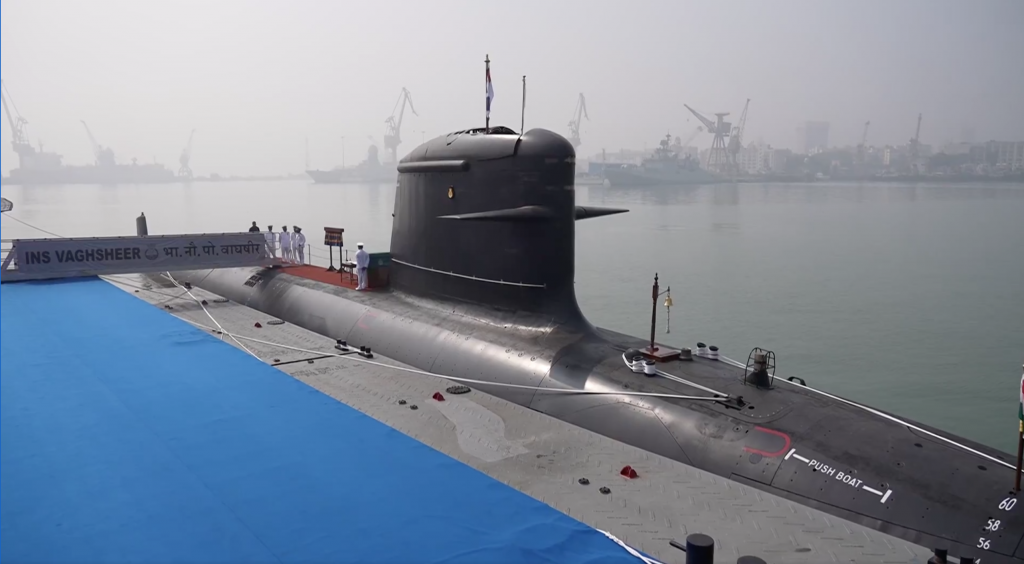
Finally, the sixth and final Scorpene-class submarine known as the Kalvari-class submarine, INS Vaghsheer built under licence from France’s Naval Group using a modular construction method which would allow future upgrades to the submarine, such as the addition of air independent propulsion (AIP) technology. The diesel-electric attack submarine is armed with wire-guided torpedoes, Exocet anti-ship missiles and state-of-the-art sonar systems. India is expected to procure another three such submarines to be built in India in a deal next month.-shp/adj/dl (Pix:NAVAL GROUP, INDIAN NAVY, NARENDRA MODI)


